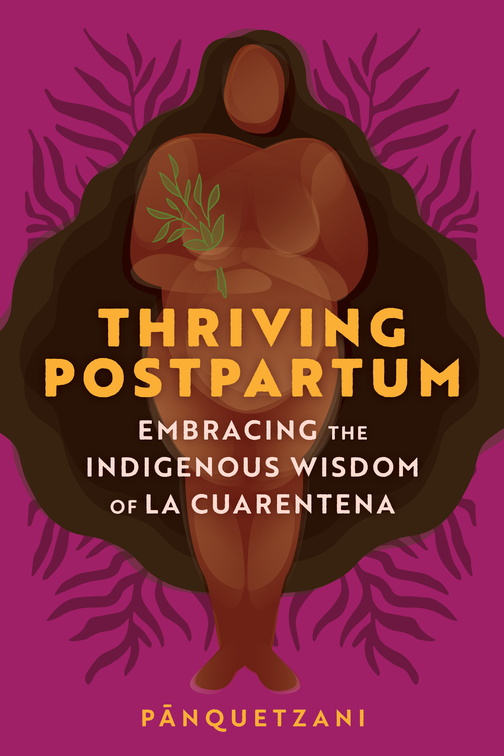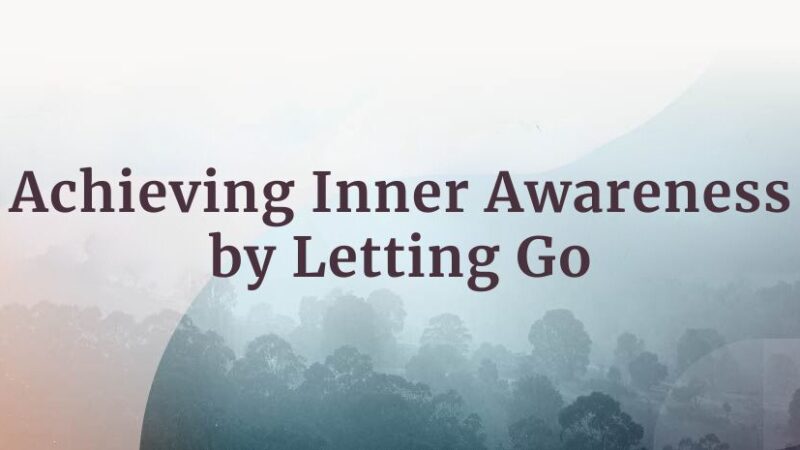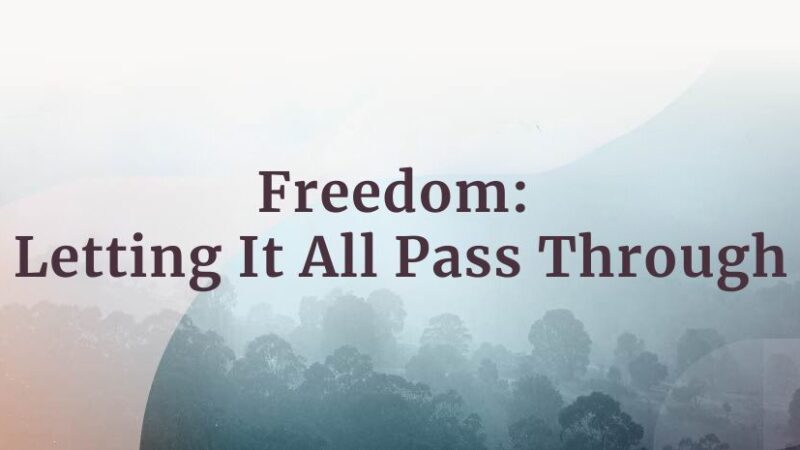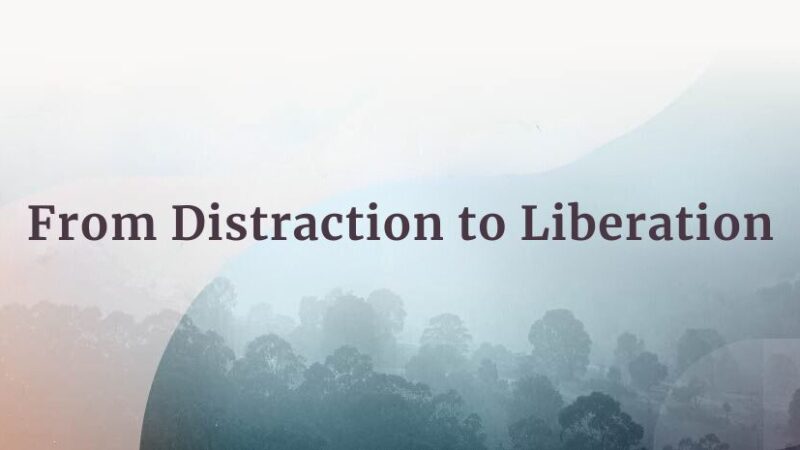-
E117: The Real Work: Letting Go from Within
Michael Singer — October 2, 2025
True spirituality isn’t about mystical experiences or lofty ideals—it’s about honestly facing...
-
Once More: Reflections on Reincarnation and the Gap Between Lives
Tami Simon — September 26, 2025
In this special reflection episode of Insights at the Edge host Tami Simon looks back on her...
-
Honey Tasting Meditation: Build Your Relationship with Sweetness
There is a saying that goes “hurt people hurt people.” I believe this to be true. We have been...
Written by:
Amy Burtaine, Michelle Cassandra Johnson
-
Many Voices, One Journey
The Sounds True Blog
Insights, reflections, and practices from Sounds True teachers, authors, staff, and more. Have a look—to find some inspiration and wisdom for uplifting your day.
Standing Together, and Stepping Up
Written By:
Tami Simon -
The Michael Singer Podcast
Your Highest Intention: Self-Realization
Michael Singer discusses intention—"perhaps the deepest thing we can talk about"—and the path to self-realization.
This Week:
E116: Doing the Best You Can: The Path to Liberation -
Many Voices, One Journey
The Sounds True Blog
Insights, reflections, and practices from Sounds True teachers, authors, staff, and more. Have a look—to find some inspiration and wisdom for uplifting your day.
Take Your Inner Child on Playdates
Written By:
Megan Sherer
600 Podcasts and Counting...
Subscribe to Insights at the Edge to hear all of Tami's interviews (transcripts available, too!), featuring Eckhart Tolle, Caroline Myss, Tara Brach, Jack Kornfield, Adyashanti, and many more.
Most Recent
E8: Achieving Inner Awareness by Letting Go
Life feels complicated only because we become entangled in our thoughts, emotions, and external experiences. Spiritual growth involves recognizing that our conscious awareness, which is transcendent to these phenomena, is the essence of our being. As such, we do not have to become overly identified with these fleeting experiences. By learning to handle all of life’s experiences without reactive resistance, we can maintain inner peace and return to the source of our being.
For more information, go to michaelsingerpodcast.com.
© Sounds True Inc. Episodes: © 2024 Michael A. Singer. All Rights Reserved.
E7: Freedom: Letting It All Pass Through
Understanding your mind is a lifelong journey where you learn that thoughts are just like waves in the ocean that come and go. This involves recognizing that thoughts and feelings, whether positive or negative, arise from deeper patterns formed by past experiences. By aligning more closely with our true spiritual nature, we can experience a deeper sense of peace, free from the ups and downs of life.
For more information, go to michaelsingerpodcast.com.
© Sounds True Inc. Episodes: © 2024 Michael A. Singer. All Rights Reserved.
Five Tips for Postpartum Bliss
Bliss out on baby, mi amor. Love your chichis. Admire your soft curves, your delicate belly, and the way you require intentional care. Everything deep comes to the surface as you pour sweat, milk, blood, and tears onto your sheets. I want your postpartum to feel blissful, so here are five tips to help you make that happen.
1. Make a postpartum plan.
You can’t plan exactly the way the birth will pan out, but you can plan the details of your postpartum support. Bodywork, meals, laundry, and childcare for your other children are some things to consider. Use this book as a guide to feel into what nonnegotiables you’ll need in place during la cuarentena.
2. Don’t DIY postpartum.
There’s a time and place for self-reliance. Postpartum ain’t the time. Postpartum traditions are community centered. Once you know that you’re pregnant, surrender to other folks holding you. Waddle that ass to circles with like-minded familias who you know would be down for mutual support. This is why we have the Indigemama community and so many other comunidades who are dedicated to saving our lives.
3. Shift your mindset.
One of the biggest internal challenges I see postpartum people go through is the mental chatter that puts a wall up, barring any chance for outside support. When we’re socialized into struggling and then rewarded for doing things on our own, it’s easy to feel guilty asking for help. You might be distrustful of other people’s capacity to fulfill your needs. How many times have you heard women say, “If you want something done right, you gotta do it yourself”? This belief sets postpartum people up for anxiety, stress, depression, and overwhelm. If you want postpartum done right, you have to feel in your body that you are worthy of being venerated; you must feel that you are deserving of being held.
Paying homage to you is paying homage to nature itself. Give your potential supporters that opportunity to connect with creation.
4. Repeat after me: affirmations, affirmations.
It’s easy to feel ashamed to ask for what you need. It’s normal to feel guilty when you see how hard people are working for you. Give yourself a pep talk: I allow myself to be cared for. I accept this help. I trust that I can be held without lifting a finger. I surrender myself to the love and labor of others. I soften and allow myself to be carried. I want you to do this every moment that you need it. When you affirm that you’re doing the right thing over and over, then eventually it becomes second nature.
5. Support your romantic relationship.
Postpartum is stressful AF! Those of us with multiple children can tell you that the little ones tend to take precedent over romantic relationships. But after a while, that really weighs down a union. Plan relationship goals. When will you start to date again? What’s the plan for one-on-one time? Who are the people who hold you and your partner(s) up as a sacred union? What baggage can you each decide to let go of now? What support can each of you get individually from healthy older couples who are content with each other? What can you appreciate about each other during la cuarentena? What words do you need to say to each other when the going gets tough? Nurturing a healthy, loving relationship with each other when you’re parenting children is a practice of discipline.
This excerpt is from Thriving Postpartum: Embracing the Indigenous Wisdom of La Cuarentena by Pānquetzani

Pānquetzani
Pānquetzani comes from a matriarchal family of folk healers from the valley of Mexico (Tenochtitlan, Texcoco, and Tlaxcala), La Comarca Lagunera (Durango and Coahuila), and Zacatecas. As a traditional herbalist, healer, and birth keeper, Pānquetzani has touched over 3,000 wombs and bellies. Through her platform, Indigemama: Ancestral Healing, she has taught over 100 live, in-person intensives and trainings on womb wellness. She lives in California. For more, visit indigemama.com.

Learn More
Amazon | Barnes & Noble | Bookshop | Sounds True
Customer Favorites
Rabbi Danya Ruttenberg: Mending the World with a Proph...
Every spiritual tradition teaches that we are all interconnected. Yet when we are faced with the world’s many injustices, we often want to turn away and isolate ourselves rather than feel the full measure of our grief, anger, and fear. In this podcast, Tami Simon speaks with Rabbi Danya Ruttenberg about how we can choose another path—one of openly encountering others with deep connection, accessing our prophetic voice to speak truth to power, and taking action while staying grounded in our spiritual selves.
Give a listen to this moving conversation exploring connecting to “the still, small voice” within yourself; Rabbi Nachman’s practice of the inner scream; allowing our bodies and hearts to process what we see in the world; our obligations as bystanders of harm; leaving your “spiritual bubble” to engage in real activism; speaking uncomfortable truths; the five steps involved in the work of repentance and repair; why the best spiritual practice is done in community; the practice of rest as a social justice issue; prayer, the work of the heart; and much more.
E28: From Distraction to Liberation
Spiritual growth involves recognizing and releasing the ego, which is a construct of accumulated experiences and unresolved emotions. True liberation comes from allowing life’s events and emotions to flow through without resistance, enabling one to reconnect with pure, universal consciousness. By shedding the ego and embracing this state, individuals can experience a profound sense of unity and peace.
For more information, go to michaelsingerpodcast.com.
© Sounds True Inc. Episodes: © 2024 Michael A. Singer. All Rights Reserved.
Jonathan Foust: The Issues Are in Your Tissues
Jonathan Foust is a longtime teacher of yoga and meditation who has guided learners at the Kripalu Center for Yoga and Health and the Insight Meditation Community of Washington, DC for more than 20 years. He is a featured presenter for Sounds True’s Mindfulness Meditation Teacher Certification Program. In this episode of Insights at the Edge, Tami Simon and Jonathan discuss the practice of body-centered inquiry—specifically the surprising ways it can be applied to pain. Jonathan explains how he has worked with body-centered inquiry to explore his own migraines, and how he has discovered a curious freedom therein. Finally, Jonathan and Tami talk about using body-centered inquiry for decision-making and interrogating the self-made obstacles to our own freedom. (61 minutes)






